Qlik QSDA2024 Qlik Sense Data Architect Certification Exam – 2024 Exam Practice Test
Qlik Sense Data Architect Certification Exam – 2024 Questions and Answers
Exhibit.
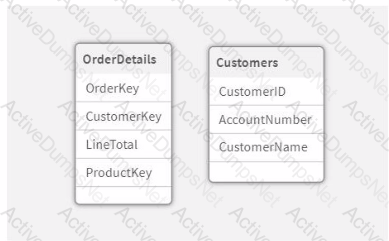
Refer to the exhibit.
A data architect is loading two tables into a data model from a SQL database. These tables are related on key fields CustomerlD and Customer Key.
Which script should the data architect use?
A)

B)

C)

D)
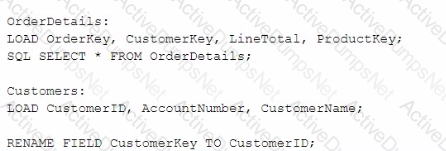
Exhibit.

A large electronics company re-assigns sales people once per year from one Department to another.
SPID is the Salesperson ID; the SPID for each individual sales person Name remains constant. The Department for a SPID may change; each change is stored in the Dynamic Dimension data.
Four tables need to be linked correctly: a transaction table, a dynamic salesperson dimension, a static salesperson dimension, and a department dimension.
Which script prefix should the data architect use?
Exhibit.
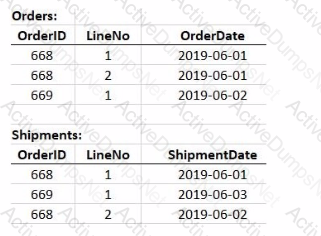
Refer to the exhibit.
A data architect is loading the tables and a synthetic key is generated.
How should the data architect resolve the synthetic key?
Sales managers need to see an overview of historical performance and highlight the current year's metrics. The app has the following requirements:
• Display the current year's total sales
• Total sales displayed must respond to the user's selections
Which variables should a data architect create to meet these requirements?
A)

B)

C)

D)

A data architect needs to load large amounts of data from a database that is continuously updated.
• New records are added, and existing records get updated and deleted.
• Each record has a LastModified field.
• All existing records are exported into a QVD file.
• The data architect wants to load the records into Qlik Sense efficiently.
Which steps should the data architect take to meet these requirements?
Exhibit.
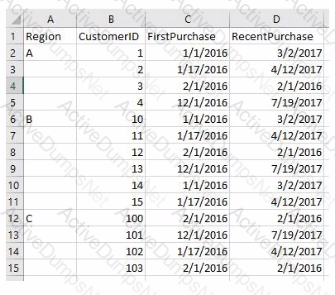
One of the data sources a data architect must add for a newly developed app is an Excel spreadsheet. The Region field only has values for the first record for the region. The data architect must perform a transformation so that each row contains the correct Region.
Which function should the data architect implement to resolve this issue?
Exhibit.
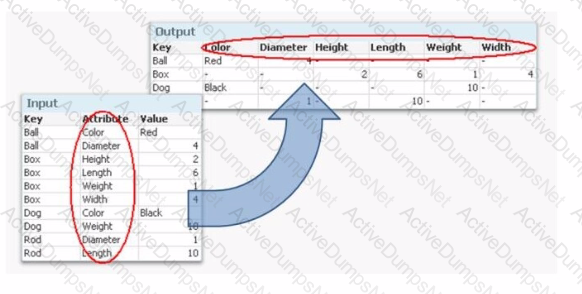
Refer to the exhibit.
A data architect wants to transform the input data set to the output data set. Which prefix to the Qlik Sense LOAD command should the data architect use?
Exhibit.

Refer to the exhibit.
The data architect needs to build a model that contains Sales and Budget data for each customer. Some customers have Sales without a Budget, and other customers have a Budget with no Sales.
During loading, the data architect resolves a synthetic key by creating the composite key.
For validation, the data architect creates a table that contains Customer, Month, Sales, and Budget columns.
What will the data architect see when selecting a month?
A company needs to analyze daily sales data from different countries. They also need to measure customer satisfaction of products as reported on a social media website. Thirty (30) reports must be produced with an average of 20,000 rows each. This process is estimated to take about 3 hours.
Which option should the data architect use to build this solution?
The data architect has been tasked with building a sales reporting application.
• Part way through the year, the company realigned the sales territories
• Sales reps need to track both their overall performance, and their performance in their current territory
• Regional managers need to track performance for their region based on the date of the sale transaction
• There is a data table from HR that contains the Sales Rep ID, the manager, the region, and the start and end dates for that assignment
• Sales transactions have the salesperson in them, but not the manager or region.
What is the first step the data architect should take to build this data model to accurately reflect performance?
A data architect needs to load Table_A from an Excel file and sort the data by Reld_2.
Which script should the data architect use?
A)
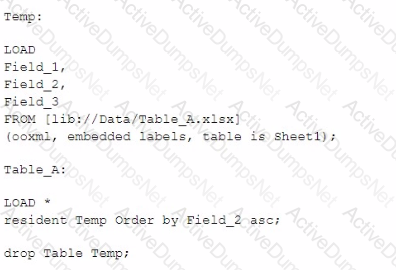
B)
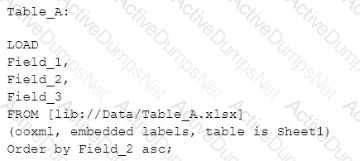
C)
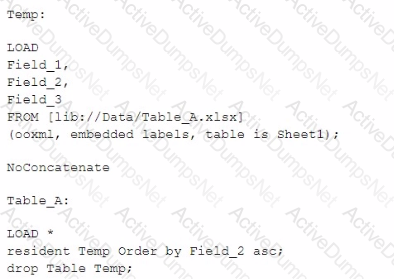
D)
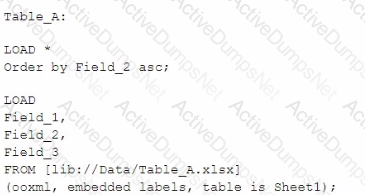
Exhibit.
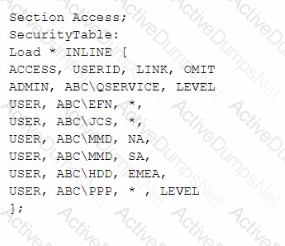
The Section Access security table for an app is shown. User ABC\PPP opens a Qlik Sense app with a table using the field called LEVEL on one of the table columns.
Which is the result?
A data architect inherits an app that takes too long to load and overruns the data load window.
The app pulls all records (new and historical) from three large databases. The reload process puts a heavy load on the source database servers. All of the data is required for analysis.
What should the data architect do?
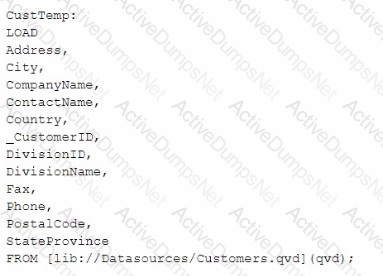
Refer to the exhibit.
A data architect needs to load data from Customers.qvd and sort the Country field in ascending order. Which method should be used?
Exhibit.
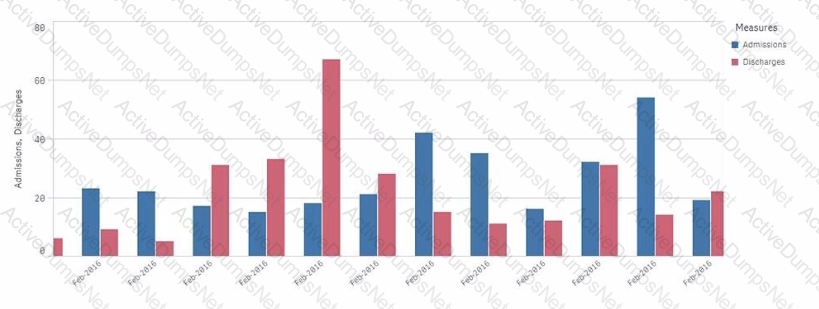
A chart for monthly hospital admissions and discharges incorrectly displays the month and year values on the x-axis.
The date format for the source data field "Common Date" is M/D/YYYY. This format was used in a calculated field named "Month-Year" in the data manager when the data model was first built.
Which expression should the data architect use to fix this issue?
